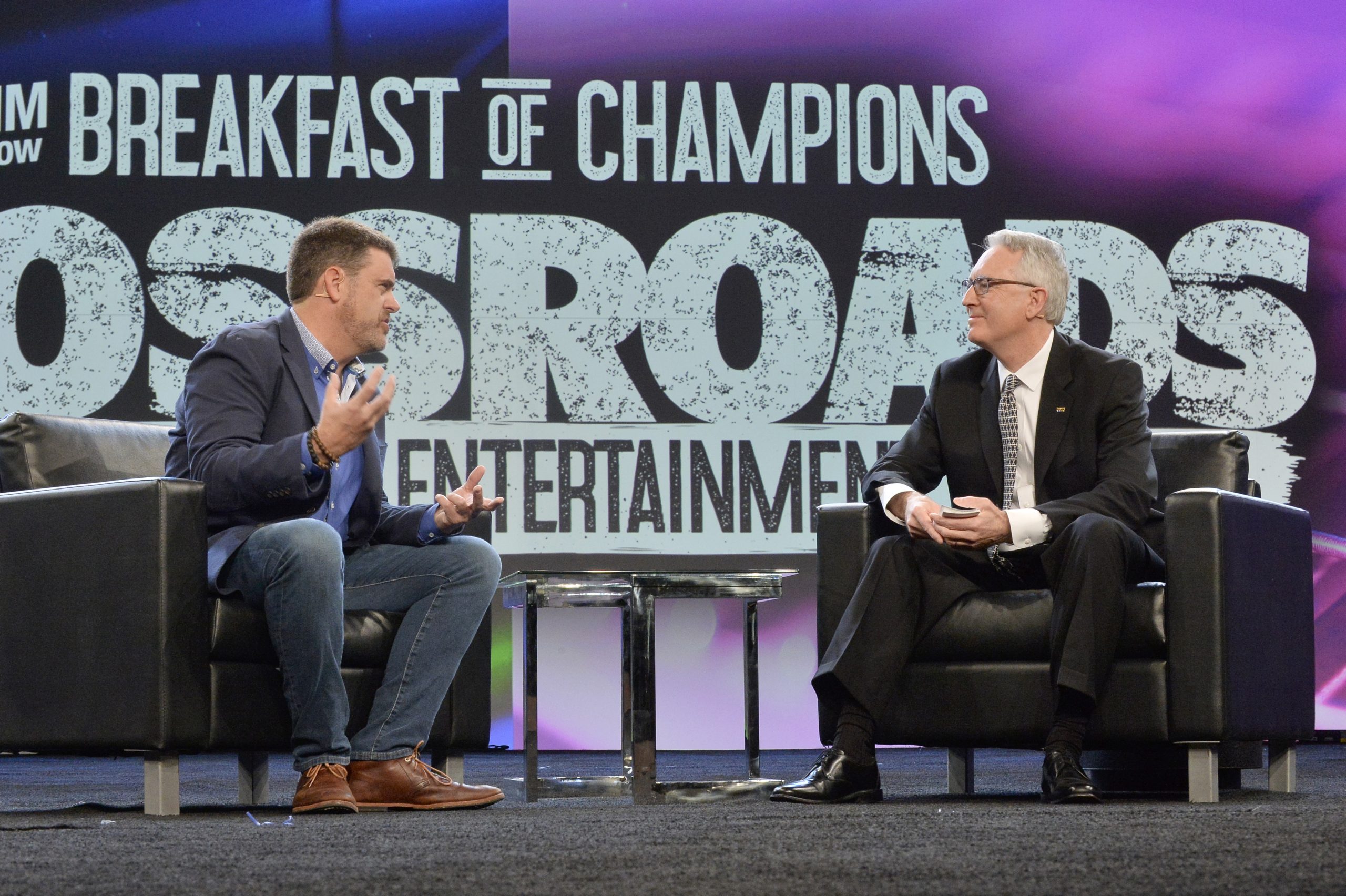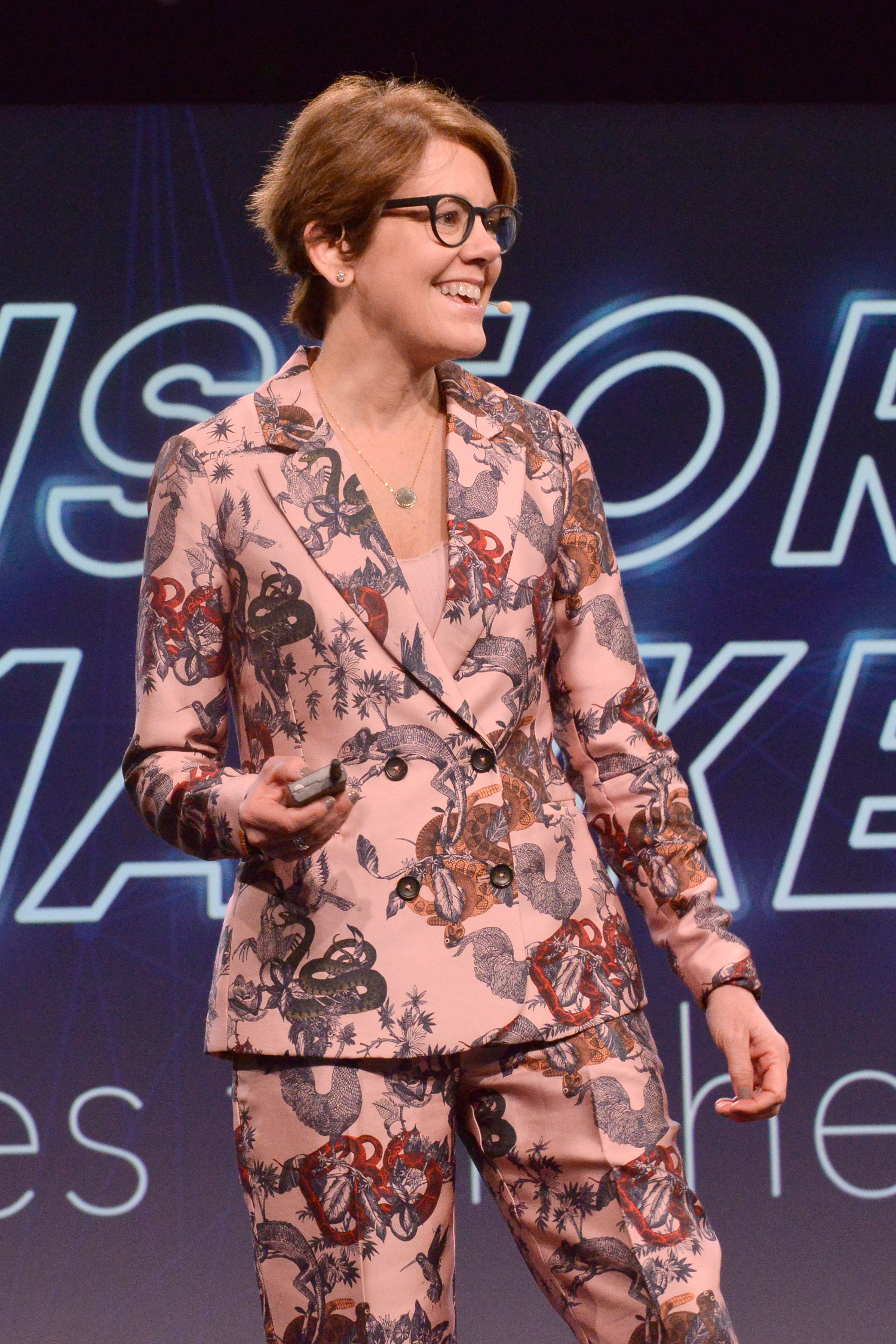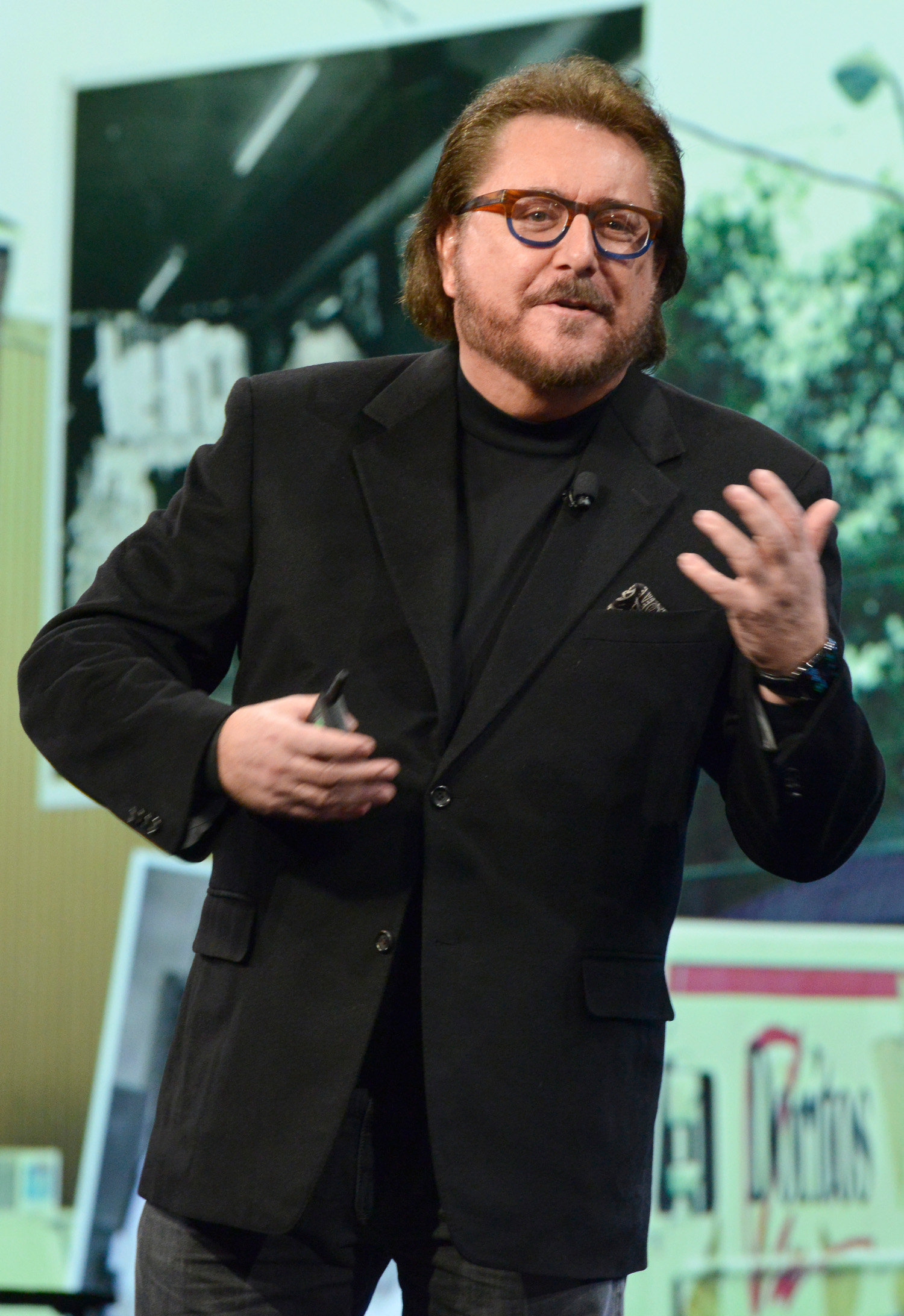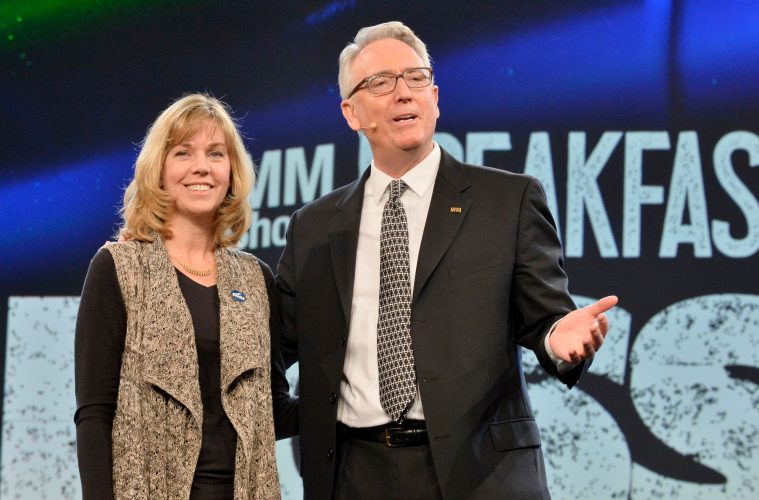By Brian Berk, Amanda Mullen and Anthony Vargas
Although Anaheim, Calif., temperatures rarely surpassed the low 60s, attendees came out in droves to visit The NAMM Show, taking place from Jan. 16 to 19. A total of 115,888 people registered for the show, an increase of 587, or about 0.5 percent compared to last year.
Exhibitors the Music & Sound Retailer spoke to seemed especially pleased by booth traffic. “This year’s NAMM Show was an excellent one for Gig Gear. We were able to schedule more meetings and do more business than we had at any of the previous years when we exhibited,” Danny Shatzkes, founder and CEO of Gig Gear, told the Retailer. “Being a small company, at past shows it was more about making sure we were there and just establishing some brand recognition while trying to turn leads into dealers. This year, we came in with strategies to do more actual business at the show, attract and sign up new dealers and attain new distribution internationally. We were able to achieve all three goals. The foot traffic was great, the atmosphere was electric and people seemed very positive about the coming year. We’re already looking forward to the 2021 NAMM Show.”
For those who attended, NAMM made sure there was plenty to see, hear and do. This year’s keynote event was the “Breakfast of Champions” of Jan. 16 at the Anaheim Hilton California Ballroom, a standing-room-only event so busy it forced some attendees to congregate next to water coolers. NAMM president and CEO Joe Lamond began by looking back at the decade of the 2010s. “What a decade we just had,” he said. “The last 10 years brought us the iPad, Alexa, Uber, Tesla and Instagram. It brought us Spotify streaming and Netflix binge watching. Nearly 20 percent of the marriages last year started on a dating site. And you might not believe it based on the headlines, but it was the most peaceful decade in history and extreme poverty hit all-time lows.”
Looking at the 2020s, Lamond describe the current timeframe as an “in-between period.” “We are at the actual definition of a crossroads,” he relayed. “I think it is fair to say we are at a crossroads in the industry as well. … [Perhaps], some of you are at a crossroads as well. … What do I mean when I am talking about a crossroads? Why do I think it is important to talk about here?”
NAMM’s president and CEO explained that all segments of MI come together at the show, and we need to focus on the entire ecosystem of the business. “For some of you, that might mean needing to diversify. For some, it might mean making very tough decisions. Should you abandon one segment for a more profitable one? Either way, we can’t forget that as we are changing, the world around us is changing.
“I would even say the crossroads is a movement,” continued Lamond. “Think of it as a good thing. A celebration of diversity in this industry. Maybe you run a full-line retail location and you moonlight at a club or doing sound at a church. … Each of you are surrounded by a love of music and share an essential place in this industry. … What are you willing to give up to get what you want at the crossroads?”
Music makers are also at a crossroads, explained Lamond. Live performances now account for three-quarters of a musician’s income, compared to just 30 percent as recently as the 1990s, he stated. “The North American concert market increased by 35 percent in the last five years. Artists are now making a living on the road, replacing their lost recording revenue. The concert/festival business is at an all-time high. It is making for an exciting growth story in our industry. You could say we are coming full circle,” asserted Lamond.
When NAMM was founded in 1901, live music was the foundation of the industry. “Live music was the only music [then],” said Lamond. “Here we are, 120 years later, and live music is back [as the primary form of revenue]. … It is my hope you take the next four days at The NAMM Show and explore your business. I urge you to treat this show as your crossroads of opportunity.”
Via his on-stage guests, Lamond focused on the live music experience and how it can grow MI retailers’ businesses. Stepping on stage first was Bryan Bradley, president of Group One Ltd. Bradley picked up on the theme of the return of live music, noting houses of worship and live concerts can be sources of growth for MI retailers. “I think there is pressure for every school, church and professional organization to have a more professional presentation,” said Bradley. “My kid’s school had ‘Mary Poppins’ this year. They rented a harness to carry a 17-year-old girl across the stage. The school wanted that experience. It has a sound system that is good enough for a basketball game, but it is certainly not going to handle ‘Mary Poppins.’ So, they rent all the gear. They don’t need to rent gear from a huge organization. If I am a retailer, as long as I have the expertise, I can have a rental business. A school might own two wireless mics but needs 17 for a performance. You can provide that [as a retailer].
“It is a great auxiliary business that is becoming more and more important,” noted Bradley. “What will also help retail is it puts the focus back on the player. With technology and recording, it used to be everyone could make a goodsounding record. You can’t do that anymore. I think music will swing away from non-players to great players.”

Bryan Bradley and Joe Lamond, President and CEO of NAMM speak onstage at the 2020 NAMM Show opening day (Photo by Jerod Harris/Getty Images for NAMM)
Following Bradley was Ted Brown Music president Whitney Brown Grisaffi, which was founded in 1931 and operates six stores in Washington State. Grisaffi explained that approximately six years ago, Ted Brown Music was at a crossroads and needed an opportunity to grow. “We were already doing installs in [school] gymnasiums and churches,” she said. “But [we saw growth] in courthouses, the entire school and hotels.”
Ted Brown Music hired “the right person with plenty of connections” and obtained a significant job at a major company’s call center in Washington state. Grisaffi did acknowledge with such a job, you need to be patient with a company’s timeline. “They will say, ‘You can’t finish that room. We are changing the plan.’ She added Ted Brown Music was required by Washington law to have an electrical license and have someone on staff with expertise in this field. “We took a leap of faith,” said Grisaffi. “We hired people, trained them and got them certifications they needed. You need to pay for the education.”
Grisaffi stressed that though an install business for an MI retailer can be lucrative, hiring the right people is crucial. “We hired really smart people; ones that are smarter than me, and they are really motivated to get the job done,” she said.
Grisaffi added that another robust revenue stream for MI retailers can be service contracts that assist schools and churches as needed. This is a good source of recurring revenue and is also good for a school or house of worship as these locations would either need to get trained themselves or simply have Ted Brown Music handle it. Often, this is a no-brainer for these locations. “The more service we can provide our customers, the more successful we can be,” concluded Grisaffi. “There are a lot of rules and regulations, but it can be done. We started with two people. We now have a department of eight. … We know we are going to have good growth in 2020 [regarding installs]. That is our [competitive] edge.”
Inventor and businessman Noel Lee, founder and CEO of cable company Monster Inc., was then invited to the stage by Lamond. Lee, who founded Monster in 1979, was asked what he has done when he reached a crossroads during his 40-plus years in business. “A crossroads is a decision. And you have to make the right decision,” Lee answered. “When at a crossroads, you need to ask yourself, Am I doing it right? Do I have the right skills? Do I have the money to go down one road as opposed to another road? We have all made bad decisions that affect our lives. You have to have the right people. You have to have the desire to make it work. Any decision at a crossroads is not an easy decision.”
The Breakfast of Champions wrapped up with the presentation of the 2020 Music for Life award, this year given to “I’m Yours” singer Jason Mraz. “This is someone who has tirelessly advocated for music and arts education,” said Lamond. “He is a two-time Grammy winner, singer/songwriter and ambassador for music making everywhere he goes.”
The 42-year-old Mraz recalled his childhood when he had a piano in his house. “I knew I could sing to it or add a rhythm to it,” said Mraz. “At a very young age, I was creative.
“I was very fortunate to have music at my local school growing up in Virginia,” he continued. “That’s why I advocate so hard. Music and arts are often the first thing [to be cut from a school’s budget].”
Slow Down to Speed Up

Ann Handley (Photo by Jerod Harris/Getty Images for NAMM)
The Friday Jan. 17 Breakfast Session was headlined by Ann Handley, chief content officer for MarketingProfs and bestselling author of “Everybody Writes: Your Go-To Guide to Creating Ridiculously Good Content” and “Content Rules: How to Create Killer Blogs, Podcasts, Videos, Ebooks, Webinars (and More) That Engage Customers and Ignite Your Business.” Handley’s energetic keynote, titled “Transformative Marketing: Strategies for the Next Decade,” centered largely on tips for understanding your audience so that you can create curated marketing content that will win them over with a personal touch.
Handley began by framing her presentation with some personal experience: She recounted for the audience her recent efforts to win the favor of a wild rabbit that had appeared in her backyard (complete with cell phone video of their interactions). Throughout her speech, Handley likened her efforts to win over the rabbit to the efforts of companies attempting to convert potential clients via digital marketing. She explained that rabbits are hardwired to be mistrustful of humans in much the same way as humans are hardwired to be mistrustful of marketing. In this sense, making friends with such a naturally skittish creature presented Handley with a classic “marketing challenge.” Her goal was to guide the rabbit through a version of the “marketing funnel” (awareness > consideration > conversion > loyalty > advocacy).
First, Handley went the obvious route and tried to feed the rabbit a carrot, but the rabbit wasn’t interested. She then tried celery, which also failed to capture its attention. She then spammed the rabbit with a huge pile of different vegetables, which only served to spook therabbit and cause it to disappear for days. Clearly, she explained, her marketing approach to the rabbit needed to be reconsidered. As can be the case with human customers, attempting to win the rabbit over in the most obvious ways didn’t yield the expected results, and spamming it with everything under the sun only made things worse.
At this point, Handley introduced her central idea: The best marketers often have to “slow down to speed up.” By “slow down,” Handley meant that marketers should be more strategic and deliberate in their marketing rather than trying a whole bunch of things to see what sticks. Handley offered three key “slow down to speed up” points to keep in mind: 1) question what we think about our buyers; 2) slow down the experience; and 3) lose the marketing voice.
Throughout her keynote, Handley attempted to dissuade the audience from pursuing some common, but ineffective, marketing techniques. She cautioned against marketing strategies that emphasize interruption (the “we’ll be right back after these messages” approach) and especially warned against bombarding potential customers with a lot of marketing content all at once. Simply cranking out more marketing content, she explained, will only contribute to the ever-growing influx of content people are bombarded with every day via their phones, email and social media, and without a deliberate marketing strategy, your content will fail to break through the noise.
Handley encouraged the audience to think of its marketing in terms of a “trust x affinity” equation, emphasizing that a business can’t be successful if it doesn’t have both the trust and affinity of its target audience. According to Handley, instead of leading with “Can I have your attention?,” marketers should approach winning over new customers by asking “How can I earn your trust?” Instead of designing your marketing in terms of “What do we have to sell?,” the better approach would be to ask “What does our customer need that only we can provide?” She added that customers always have these questions in mind when deciding who to do business with: “Do I trust them?” and “Do I like them?” She encouraged marketers to have “pathological empathy” with their target audiences in order to understand their potential customers at a much deeper level. Rather than thinking purely in terms of material needs, Handley suggested that marketers consider what unites their target audience and what compels them emotionally. Successfully identifying the emotional core of your audience, embodying that truth in your marketing, and doing so consistently over time will build trust and affinity and forge a lasting connection between your brand and its customers.
In addition to these big-picture ideas, Handley also offered some practical marketing advice. According to Handley, email is an underrated marketing tool because it’s the only digital space where people, not algorithms, are in control. She suggested that marketers focus on the “letter” aspect of email newsletters, not just the content and distribution strategy. Her tips included making the newsletter come from a real person instead of “do-not-reply,” encouraging responses and feedback from email recipients, and writing newsletters in a more personalized voice that emphasizes person-to-person communication. She also stressed that, when it comes to creating all types of marketing content, from email to video, being relatable and human is always better than being cold and businesslike (in other words, “lose the marketing voice.”)
Handley ended her keynote by demonstrating how she applied these principles to her attempt to make friends with the rabbit in her backyard. After dismissing her preconceived notions about what she thought the rabbit wanted, Handley conducted some deep research on the rabbit, learned about its species’ particular love of leafy greens and grasses (not carrots), and used that knowledge to great success. Before long, the rabbit was literally eating out of her hand — another customer successfully converted!

Scott McKain (Photo by Jerod Harris/Getty Images for NAMM)
Be an Icon
Running an independent music store is no small feat, particularly during a time when big-box stores and chains seem to be taking over the market. Fortunately, there are ways to keep small businesses — including music stores — relevant, despite all the disruption. This is what Scott McKain, professional speaker and author, covered during his Saturday-morning breakfast session at The NAMM Show. Entitled “How to Build an Iconic Business,” the Jan. 18 hour-long forum delved into how small businesses can use customer service to their advantage, as well as what principles they should adhere to when trying to make a sale.
McKain’s knowledge of drawing in business and maintaining customers began at an early age, as his family owned a local grocery store when he was growing up. The speaker opened the session by recounting his time working there, as well as the moment he realized everything was about to change: when a larger supermarket moved into the same area. McKain and his family were certain the new business would drive their customers to shop at this “new retail experience” instead of at their small, family-owned store. This was when McKain first became so fascinated by customer service. Specifically, he wanted to know why some consumers still chose to do business at their independently owned store over the larger, newer chain.
“Why are some customers incredibly loyal to you and others wouldn’t shop with you if they had to?” McKain asked. “Why are some customers kind of loyal — they buy from you, they buy elsewhere? Why do customers make the choices they make? Why do they do the things they do?” McKain received his answer when one gentleman informed him that he shopped at their grocery store because he felt the people there liked him. It’s a strange enough reason to offer, but it highlights the type of connection consumers are looking for when they frequent a business.
“In that instant, I began to understand something you already know,” McKain said, “and that is the connection that you make with your customers that transcends transaction. The relationship you build is the foundation of any iconic organization, regardless of the size, regardless of what you do.” McKain brought that sentiment back to the audience because, when it comes down to it, building connections is at the center of every iconic business, including music retail. He also shared his own experience as a speaker and a writer before outlining the five main principles he believes every business owner should adhere to in order to make themselves stand out.
The first principle is to “play offense,” McKain explained. “In other words, know your competition but don’t concentrate on them. Play your own game.” He emphasized that business owners often spend so much time focusing on what their competition is doing that they lose sight of what’s working for them. “Every moment that we are defending ourselves against competitive pressures wastes a moment we could be innovating to make them irrelevant.”
The second principle can be conceived as controversial, but McKain told retailers to “stop selling and start creating ultimate customer experiences.” He suggested focusing on fostering connections instead, saying, “When we focus on experiences and not pressure tactics, we end up closing more sales. And how do we do that? We connect through story.” And to demonstrate how much more effective storytelling is when making a sale, he cited the example of a dental website that told the story of a young woman whose husband was in the military overseas. Instead of showcasing images of their product — teeth — like all of their competitors, this dental facility used an anecdote about a wife wanting to give her husband “a smile he’ll never forget” to win over consumers. “Who do you connect with?” McKain asked. “The dentist who wants to show you product, so to speak, over and over again, just\ like everybody else? Or the one that used a compelling narrative so that you understand the emotion that goes along with doing business?”
The third factor when it comes to creating an iconic business is that “there must be congruency between promise and performance.” McKain urged business owners to ensure that performance is up to par with the things they promise in order to attain business because customers “want the promise to be relative to the performance.” Part of the issue here, the speaker explained, is that the people making these promises aren’t always the individuals delivering the performance. That’s why ensuring that staff members are all on the same page is crucial to delivering a good experience to customers. This is especially important when an organization has numerous departments. McKain’s solution for ensuring this congruence is a simple one, but it can help retailers stand out: “You know what customers want? They don’t want you to underpromise and overdeliver. Customers want you to do what you said you would do when you said you would do it.”
The fourth principle is one some might find surprising, but McKain told the crowd, “Iconic organizations aren’t afraid to go negative.” Given that most businesses want to be viewed in a positive light, this can seem counterproductive, but the speaker pointed out that businesses need to know what’s wrong in order to come up with solutions. “Iconic organizations don’t just placate the customer; they solve the problem that created it,” he said. “That happens when you’re willing to go a little bit negative. If you think about it, all disruption starts with dissatisfaction. There’s a point where people are dissatisfied about how we’re doing business. If we can eliminate that, we eliminate the challenge of disruption.”
Finally, McKain’s last principle for running an iconic business is one that’s important to maintaining relationships in any facet of life, but especially in business: reciprocal respect. McKain defined this as the ability to “demonstrate to others respect that we hope to get in return.” These others include employees, customers, and potential customers — anyone who can affect a retailer’s bottom line. “Have you ever noticed there’s an interesting correlation between the Glassdoor and LinkedIn lists about the best places to work and the studies about the best customer experience?” he asked. “Because when you take care of your people, they take care of you.”


